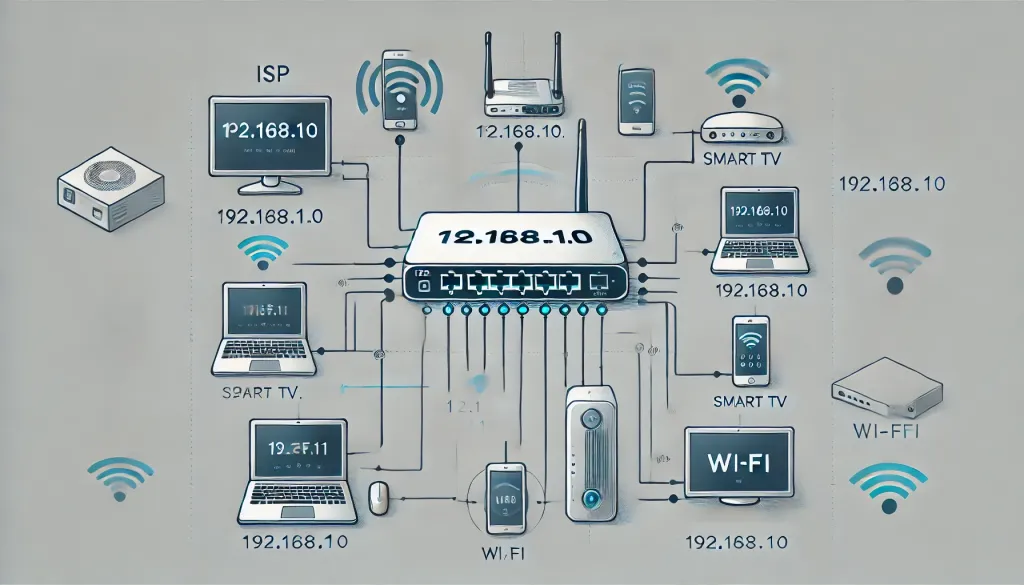Logging into your router’s admin panel through 192.168.10.1 is an essential task for anyone who wants to manage their network settings. Whether you’re troubleshooting your Wi-Fi connection, setting up a new network, or tweaking your router’s settings, knowing how to access the router’s web interface can save you time and frustration. In this guide, we will take you through the entire process of logging into 192.168.10.1, step by step, and cover everything from troubleshooting login issues to advanced settings you can configure.
How to Login to 192.168.10.1
Once you’ve gathered everything you need, follow these simple steps:
- Connect Your Device to the Router:
Make sure your computer or smartphone is either connected to the router via Wi-Fi or using an Ethernet cable. - Open Your Web Browser:
Open any web browser (Google Chrome, Firefox, Safari, etc.). - Enter the IP Address:
In the address bar of your browser, type192.168.10.1and press Enter. - Enter the Username and Password:
You will be prompted to enter a username and password. If you’ve never changed these from the default settings, you can typically find this information on a sticker on the back or bottom of your router. The default username might be “admin,” and the default password could be “admin” or “password.”
Once logged in, you’ll have access to the router’s control panel where you can adjust settings as needed.

Common Login Errors and Troubleshooting Tips
Sometimes, logging into 192.168.10.1 doesn’t go as planned. Here are some common issues and how to resolve them:
- Incorrect IP Address: Double-check that you’ve entered the correct IP address. Some routers may use a different default IP like
192.168.0.1or192.168.1.1. - Forgotten Username/Password: If you’ve changed your login credentials and can’t remember them, you may need to reset the router to factory settings (we’ll cover this later).
- Router Not Responding: Ensure the router is powered on and connected to the internet. If necessary, reboot the router.
- Connection Issues: Check your device’s connection to the router. If you’re using Wi-Fi, make sure you’re connected to the right network.
How to Change the Router’s Default Username and Password
For security reasons, it’s highly recommended that you change the router’s default username and password after logging in. Here’s how to do it:
- Navigate to the settings menu once logged into the router.
- Look for an option like “Admin Settings” or “System Settings.”
- Find the “Change Password” section and enter your new desired credentials.
- Save the changes, and remember to update your records to avoid forgetting the new credentials.
Advanced Settings You Can Access via 192.168.10.1
Once you’re logged into 192.168.10.1, you can access a variety of advanced settings, such as:
- Network settings: Change your Wi-Fi name (SSID), password, and encryption methods.
- Quality of Service (QoS): Prioritize certain devices or applications for better bandwidth.
- Firmware updates: Keep your router’s firmware up to date for improved performance and security.
How to Reset Your Router
If you ever forget your login credentials or encounter a major issue, you may need to reset your router to factory settings. Here’s how:
- Find the reset button on the back of your router (usually a small hole that requires a pin to press).
- Hold the reset button down for about 10-15 seconds until the router’s lights blink.
- After resetting, the router will return to its default settings, including the default IP address, username, and password.
Security Considerations While Accessing 192.168.10.1
Whenever you access your router’s admin panel, ensure you’re following best security practices:
- Use strong passwords: Avoid using default passwords or easily guessable phrases.
- Enable encryption: Always use WPA2 or WPA3 encryption for your Wi-Fi network to prevent unauthorized access.
- Keep firmware up-to-date: Router manufacturers frequently release firmware updates to patch security vulnerabilities.
How to Log Out of 192.168.10.1 Properly
After making changes to your router settings, it’s important to log out to protect your network’s security. Simply navigate to the logout option (usually located in the upper right corner), and make sure to close the browser tab to end the session securely.